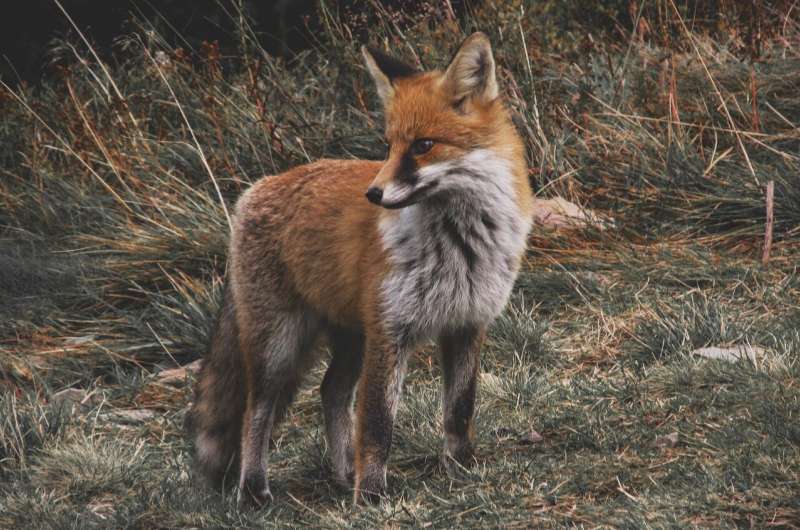This article has been reviewed according to Science X's editorial process and policies. Editors have highlighted the following attributes while ensuring the content's credibility:
fact-checked
trusted source
proofread
Nauseous territory: Outfoxing predators using baits that make them ill

Introduced foxes, dogs, cats, rats, and other predators kill millions of native animals every year, but what if they were conditioned to associate this prey with food that made them ill?
A team of international researchers have shown the potential to do just that, burying baits containing capsules of levamisole, a chemical that induces nausea and vomiting when consumed by predators.
In a world first experiment conducted in south-eastern Australia, where introduced red foxes are responsible for countless wildlife deaths, the Australian National University (ANU) and University of South Australia scientists laid baits of fried deboned chicken, with some containing encapsulated levamisole to hide the taste and smell of the chemical that makes animals nauseous or sick.
Over three sequential periods, untreated baits were laid, followed by levamisole-containing baits and untreated baits again. During the final period baits taken fell by 30%, indicating that foxes had consumed the levamisole-containing baits, fallen ill, and were reluctant to go back for seconds, despite the later absence of levamisole.
Researchers say this evidence shows it is possible to condition foxes to avoid food sources based on their unique odor, and ultimately this strategy may be applicable to protecting vulnerable wildlife living in that habitat.
The non-lethal tactic for keeping predators at bay could be potentially more effective than shooting, trapping and poison baiting in certain contexts, according to ANU Ph.D. student Tim Andrewartha.
"Based on our findings, this potential is something we hope to explore in the future," Andrewartha says.
UniSA researcher Associate Professor Anton Blencowe says invasive predators are responsible for almost 60% of all bird, mammal, and reptile extinctions globally, so it's critical to find ways to mitigate their impacts on native wildlife.
"Existing lethal control methods—shooting, trapping, and poisoning can be counterproductive in some situations, with predators capable of adapting their behavior and becoming harder to control," he says.
The tactic employed in this experiment, known as conditioned taste aversion (CTA), shows promise as a tool to reduce the predation of vulnerable wildlife, the researchers outline in a paper published in Conservation Science and Practice, titled "Landscapes of nausea: Successful conditioned taste aversion in a wild red fox population."
A range of encapsulated nausea-inducing agents can be injected into food sources, such as eggs or animal carcasses, so the predator associates the symptoms with the food odor and not the chemical.
Microencapsulation, where the agent particles are minimized, can also be used to hide textures and prevent the capsule from being accidentally broken open during consumption.
Scientists say more research is needed to determine the best chemical and dosage used, whether live prey rather than a carcass are more effective at conditioning aversion in the red fox, and the time between consumption and onset of symptoms.
The study was led by the Australian National University in collaboration with the University of South Australia, the University of Tokyo, and James Hutton Institute, UK.
More information: Tim Andrewartha et al, Landscapes of nausea: Successful conditioned taste aversion in a wild red fox population, Conservation Science and Practice (2023). DOI: 10.1111/csp2.12984
Provided by University of South Australia


















